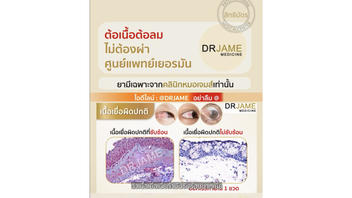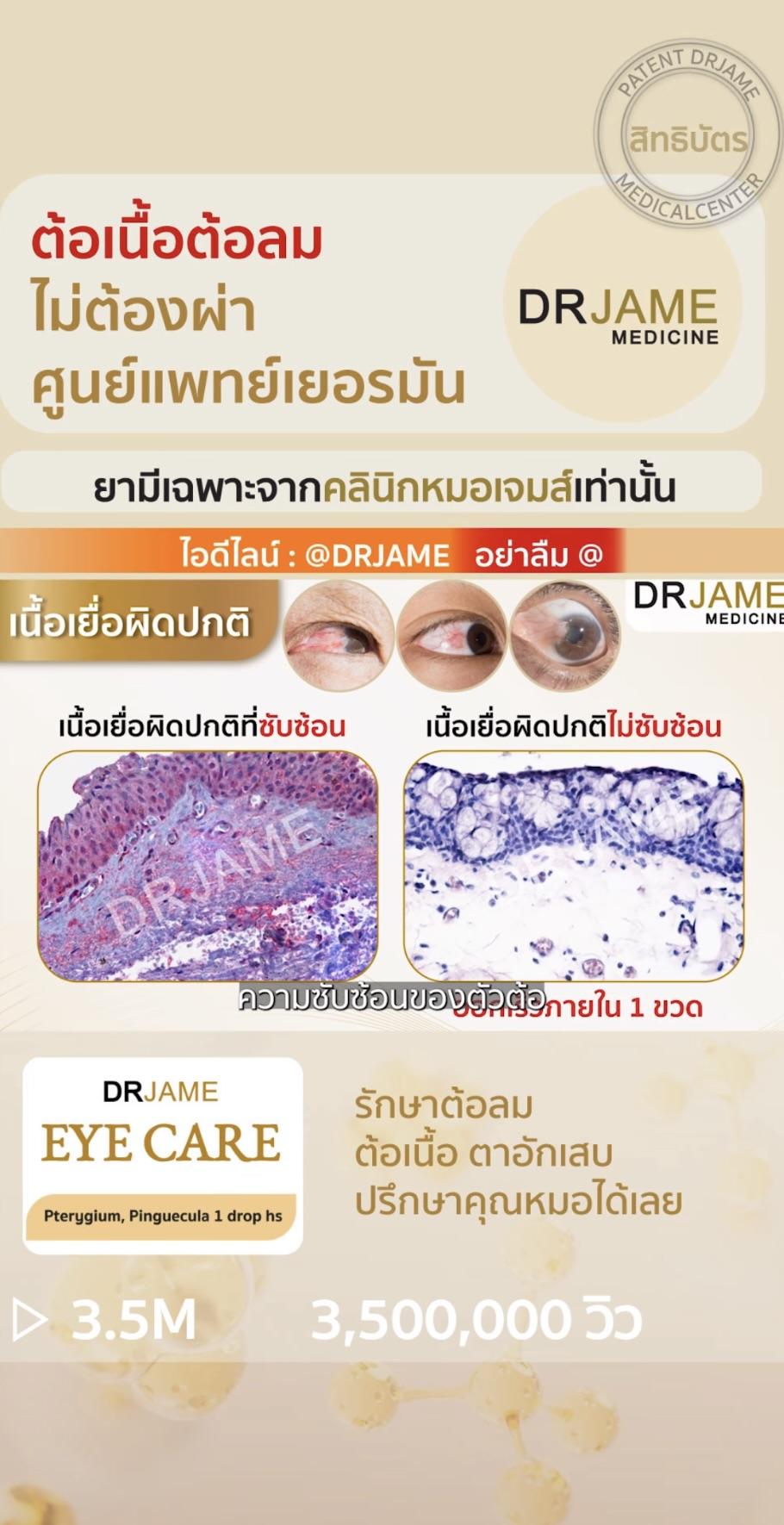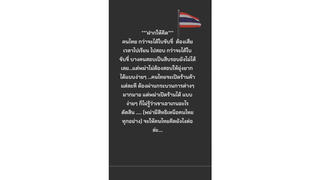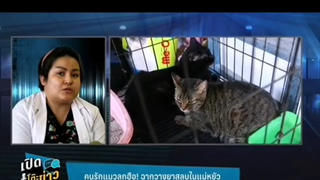
Did DR JAME's eye care product use its own research studies for advertisement? No, that's not true: DR JAME's eye care product for pterygium, a wing-like triangular membrane that can affect eye vision, is advertised by showing histology photographs from two different published scientific research studies that are unrelated to the product.
The claim appeared in a video (archived here) published on TikTok by the @DrJame account (archived here) on January 7, 2024, under the title (translated from Thai to English by Lead Stories staff) "No need for surgery for pterygium at German Medical Center, Dr. Jame Medicine." It opened (as translated):
Someone asked about how long it takes for pterygium recovery. It depends on the complexity of the shape and growth of pterygim tissues. If the tissue layer is simple, it will take less time than patients with spiral, complicated pterygium tissues. However, doctor confirm that pterygium will be removed.
This is what the post looked like on TikTok at the time of writing:
 (Source: TikTok screenshot taken on Sat Feb 17 19:51:08 2024 UTC)
(Source: TikTok screenshot taken on Sat Feb 17 19:51:08 2024 UTC)
The post claims to show the histology of a case of complex pterygium abnormal tissue before and after using a bottle of Dr. Jame's eye care product. The Lead Stories staff found that the two images shown below are unrelated to each other and the product.

(Source: TikTok screenshot taken on Sat Feb 17 19:45:19 2024 UTC)
The image on the left side is described in the post as pterygium abnormal tissue and carries a DR JAME watermark. But the original photograph has a different source and does not belong to DR Jame's eye care company. It shows a case of pterygium, immunostaining of pterygium tissue focusing on a protein called Hsp90 in numerous epithelial cells (original magnification, x400), and comes from a scientific research study titled "Immunohistochemical detection of Hsp90 and Ki-67 in pterygium, 2013" (archived here), conducted by a Brazilian team of the Hospital Federal Fluminense University, Rio de Janeiro, and published by Diagnostic Pathology in February 2013.
The image on the right side supposedly shows the result on the same tissue after using the eye care treatment with DR JAME product. But Lead Stories was able to trace back the original image, which is unrelated to the first one. The original picture shows less complex pterygium tissues, which are goblet cells grouped as intraepithelial glands (Hematoxylin-Eosin staining, x200), from a paper titled "Pterygium: histological and immunohistochemical aspects" (archived here), published by the Romanian Journal of Morphology and Embryology on February 26, 2011.
Dr Jame's eye care product, claimed to be medicinal, lacks scientific credibility. A search on the Thai FDA approval website (archived here) shows no record to display; therefore the product information cannot be verified.










